in five volumes, printed at Canton, at the expense of many thousand pounds by the Hon. East India Company
Queen Street Chapel, London, 13 May 1824
Many of those attending the thirtieth anniversary meeting of the London Missionary Society were deeply concerned about news, recently received, concerning the death of their missionary John Smith, following the Demerara rebellion (Chapter 5). The Rev. Dr. David Bogue, however, directed the meeting’s attention to the achievements of two of his former students, Dr Robert Morrison and Dr William Milne, who had recently produced a translation of the Bible into Chinese:
By their labours the Scriptures are rendered intelligible to some hundreds of millions of the human race. Strange! (Said Dr. B.) strange! That 1800 years should have been suffered to elapse before the Bible should be translated into the language of the most numerous class of people of the world.1
Three decades earlier, Bogue’s appeal To the evangelical dissenters who practice infant baptism had led to the establishment of the Missionary Society.2 He had personally volunteered for missionary service in India in 1796, along with his former student Robert Haldane, but they had been blocked by the East India Company. Having studied Divinity at the University of Edinburgh in Scotland, Bogue thought missionaries needed a rigorous education, including a working knowledge of Greek, Latin and Hebrew, to allow them to translate the Bible, which he felt was more important than preaching, at least initially.3
In the early years of the Missionary Society, Bogue’s vision came up against that of Thomas Haweis, an Oxford-educated Anglican from Cornwall, who thought it sufficient to despatch ‘godly mechanics’ as missionaries. Haweis’ approach eventually bore fruit after two decades with the conversion of Pomare at Tahiti by the bricklayer Henry Nott (chapter 4). During the Society’s first decade, however, many ‘godly mechanics’ abandoned their stations in Tahiti and South Africa, prompting the Directors to reconsider their approach.
In 1800 Bogue was made responsible for training prospective missionaries at his Gosport Academy in Hampshire, where he had trained Independent Ministers since 1789. Robert Morrison was one of the early missionary students, arriving in 1804.
Two decades later, Morrison sat listening to Bogue’s speech, having recently returned from China. At the prompting of others, he stood to address the meeting, holding a letter of instructions he had been given by the Society’s treasurer, Joseph Hardcastle, in early 1807:
At that period I was considered a Lay-Missionary, – a sort of mathematician sent to gain, if practicable, a residence in yonder region. The acquisition of the language was thought scarcely possible; though a faint hope was entertained that it might be acquired, and that a Dictionary might be composed, and the Holy Scripture might be translated in Chinese; and now, after 17 years residence in that country, I stand here before God and before you this day, and would our esteemed friend were yet on earth to witness our laying before the Society the scarcely anticipated result of this undertaking.4
Morrison then presented a copy of the Bible along with ‘a copy of the Chinese and English Dictionary’ to the assembled London Missionary Society.5 Morrison was clear that ultimate credit for his achievements rested with God. Nevertheless, the success of his mission to China, and particularly his production of the Dictionary, suggest credit was also owed to Britain’s premier joint-stock company, the East India Company, with which he formed a strategic alliance.
Rev. David Bogue (1750-1825)
Stipple engraving by T Blood from a drawing by Wakeman, published in 1822.
Robert Morrison, c. 1824
He appears to be holding a copy of his Chinese Bible
Oil on canvas by John Robert Wildman (1788-1843)
Morrison arrived back in London in March 1824, stopping briefly at Cape Town on his way from China, where he met Robert Moffat (another of Bogue’s former students), presumably with his ‘Mantatee’ captives (Chapter 8). Morrison was himself accompanied on the journey by a Chinese servant, ‘Poon a Sam’, referred to by Bogue in his speech as ‘a Christian Chinese whom we are delighted to see amongst us this day’.6 Intriguingly, the Catalogue of the Missionary Museum, printed two years later in 1826, lists a number of items presented by ‘A Sam’ including a pair of shoes, Chinese combs and a brush, two curiously carved coconut cups, as well as the Chinese cup used by Morrison.7
This chapter’s title also comes from the four-page ‘CHINA’ section, two-thirds of the way through the Catalogue. Although a number of Chinese ‘idols’ are listed at the beginning of the section, it also includes a type of artefact unlike most others in the Catalogue – printed books. The first to be listed, in a section describing the contents of ‘the fourth shelf’, is Morrison’s ‘Chinese and English dictionary’. This is followed by two of his other books: ‘Grammar of the Chinese Language’ (1815) and a ‘A View of China for Philological Purposes’ (1817). Only then is his bible translation listed as:
A COPY of the SACRED SCRIPTURES of the Old and New Testament, translated into the Chinese language by the indefatigable labours of Dr. Robert Morrison, assisted in part of the work, by the late Dr. Milne, of Malacca.
By this great achievement, many millions of the human race may be enlightened in the knowledge of God our Saviour.8
This, however, is followed by listings for Four Books on Drawing, published by the Chinese and A Work of Agriculture, &c.‘concerning the husbandry and the cultivation of Silk’ encouraged by Emperor Kang-Hi (Kangxi). Unlike South Africa and Tahiti, where there was no established form of writing, China had its own history of textual production. Indeed, Bogue seems to have felt that literacy was an important marker of ‘civilisation’, necessitating an approach to missionary work that was rooted in textual production.9
The Chinese books in the Missionary Museum may have formed a small part of the library of nearly 10,000 Chinese books which Morrison brought with him from China. It is curious, particularly perhaps for a Protestant missionary society, that the ‘Sacred Scriptures’ appear to be sandwiched between works on the Chinese language and others on drawing and agriculture, given the emphasis given to ‘this great achievement’ with its potential for conveying ‘the knowledge of God our Saviour’.
Perhaps this ordering reflects the arrangement of the volumes on the shelf, with the bible displayed at its centre. It may also be progressive, suggesting that it was Morrison’s dictionary and grammar that ultimately enabled his translation of the Sacred Scriptures. In any case, it is significant that the dictionary and the bible translation were presented to the Society together in May 1824, and continued to be displayed alongside each other at the museum, since these two major works competed for Morrison’s time and attention over nearly two decades.
While the Bible translation was funded by the London Missionary Society, with contributions from the British and Foreign Bible Society (established by a similarly non-denominational group of evangelicals in 1804), the three-volume 4,826 page dictionary, printed in six parts between 1815 and 1823, was funded exclusively by the East India Company, to the tune of over £10,000.10 Given that the East India Company was officially opposed to the operation of Christian missionaries, as potentially disruptive to trade, how was Morrison able to serve these two masters?
Cover page of Morrison's Grammar of the Chinese Language
Printed at Serampore in 1815
Cover page of Morrison's 'A View of China, for Philological Purposes'
Printed at Macau at the East India Company’s Press in 1817
Nineteenth Century View of Morpeth, with the Market at its centre
The text commemorates the birth of Robert Morrison in the town.
Born in 1782 at Morpeth in Northumberland in the far north of England, Morrison was the youngest of eight children. His father had been a Scottish farm labourer who moved to Newcastle-upon-Tyne to work as a shoe-tree maker. Following an apprenticeship with his father, Morrison applied to train as a minister, moving to London to study at the Hoxton Academy at the age of twenty. In early 1804 he applied to become a missionary and was sent to Bogue’s Gosport Academy to complete his training. Morrison hoped he might go with Mungo Park to Timbuktu in Africa, and prayed that God send him ‘to some situation where he will make me abundantly useful to the souls of men’.11
In 1805, the London Missionary Society directors outlined a plan to send missionaries to Prince of Wales Island (Penang – under East India Company control since 1786), where it was hoped they would learn Chinese with the aim of translating the Bible.12 Morrison began to learn Chinese with Yong Samtak (Rong Sande) from Canton (Guangzhou), who had come to London on an East India Company ship to learn English. Together they transcribed Evangelia Quatuor Sinica, a manuscript copy of a harmony of the gospels in Chinese, made by Jesuits in the 18th century, which had recently been found at the British Museum.
Ordained in early 1807, Morrison left London at the end of January with two missionaries bound for India. Since the East India Company, which held a trading monopoly in China, refused to carry missionaries in their ships, they sailed first to New York. On arrival, Morrison went to Philadelphia to meet American missionary supporters in the hope they could provide him with a letter of introduction to the American Consul at Canton, the only place Europeans were permitted to trade in China after 1757.13
Sailing in mid-May, Morrison arrived at the Thirteen Factories in September 1807, having briefly met English residents at Macau, approximately 60km to the South near the mouth of the Pearl River. They told him the Chinese were forbidden from teaching outsiders on pain of death, and that working in Macau would be difficult on account of Catholic resentments in this Portuguese-controlled entrepôt. Morrison’s letter of instruction from Hardcastle made it clear that, many months travel from London, he was at ‘liberty to act on every occasion according to the dictates of your own prudence and discretion’, suggesting he find employment as a mathematician or teacher of English.14
A View of the European Factories at Canton
Oil on canvas, by William Daniell, c. 1785
Morrison found lodgings in the old French Factory, under the supervision of American traders. The First American ships had arrived in 1784, shortly after the treat of Paris granted independence to the United States, and by the time Morrison arrived the major trade good they brought was sandalwood from Hawai’i and other Pacific islands (Chapter seven). Morrison, pretending to be American, worked secretly to learn Chinese, with assistance from Yin Kwan-ming (Abel Yin), a Chinese Catholic from Peking (Beijing). He was also taught Cantonese by Le Sëensang (Li Xiansheng), a Catholic whose father had undergone priestly training with Jesuits in Portugal for twelve years.
In November 1807, before the Missionary Museum was established in London, Morrison sent a number of curiosities back to Joseph Hardcastle. These included a figure of Kwan-yin (one of these is the first item listed in the CHINA section of the 1826 catalogue of the Missionary Museum), three weapons used by Malays (three KRIS from JAVA are listed in the 1826 catalogue), a pair of wooden sandals, as well as paintings ‘illustrative of the idolatry of this benighted people’. He also sent a book – a history of China which he asked be sent to the Royal Society, since he knew no copy was then available in London.15
Morrison asked Hardcastle to send him copies of the Missionary Magazine, a little more money (he found living as a European in Canton exorbitant), as well as some striped pocket handkerchiefs – ‘a very acceptable present to the Chinese’.16 By December 1807, Morrison had acquired between four and five hundred volumes in Chinese on language, religion, philosophy, medicine, laws and history. Partly for financial reasons, Morrison initially adopted Chinese styles of dress and food, but came to see this ultimately made him more conspicuous, living as he was among the European and American traders within the restricted factory zone.
In June 1808, Morrison travelled to the English factory at Macao, 100 miles to the South, remaining for three months to improve his health. He was, at that time, assisted to find a house by the chief of the English factory and representative of the East India Company, John Roberts, to enable his work on a Chinese Dictionary.17 In October, the English were expelled from Canton after East India Company troops occupied Macao, ostensibly to protect it from the French, so Morrison returned to Macao but seems to have felt he would soon need to move to Penang, as originally proposed.
While at Macao, however, Morrison formed a close friendship with the evangelically minded Morton family from Ireland, recently arrived traders, and on 20 February 1809 he married Mary Morton, their eldest daughter. On the same day he was offered a post as Chinese Translator and Secretary for the East India Company’s Factory at Canton, with a salary of £500 a year. This provided him with an official position, allowing him to continue studying the language, working on the Chinese Dictionary, while continuing his translation of the bible privately. When informed of these developments, the Missionary Society’s representatives divined the gracious hand of God.18
By September 1810, Morrison had revised a translation of the Acts of the Apostles based on the manuscript in London, and had 1000 copies printed secretly. By the end of the same year he revised a translation of Luke’s gospel, which he also printed locally. Writing from London in March 1812, Hardcastle and Burder thanked Morrison for the three copies of his translation of Acts which he had sent them, noting:
we could have wished the number had been larger, for the sake of gratifying some of our friends in the country, and the Directors hope that when you shall have printed another portion of the Sacred Word they shall receive at least two dozen copies. One of the three with which you favoured us was presented by us to the British and Foreign Bible Society, who kindly voted £500 towards the important object of printing the Sacred Scriptures in the Chinese language; and another copy was ordered to be unstitched for distribution among the friends of the Society in England, Scotland, Wales and Ireland, who have expressed themselves gratified, in no small degree, to behold the first-fruits of the labours of their missionary in China, on whose behalf the prayers of thousands have been, doubtless, thereby excited.
As a specimen of Chinese typography, it could not fail to excite more than ordinates attention as an oriental curiosity; but, to the eye of every friend of missions, it presented an ocular demonstration of the existence of the Book of Books in the language of so large a portion of the human race.19 We especially rejoice in hearing that the improvement in the art of printing, by means of stereotype, is not confined to Europe, but that from your wood-cut characters you are assured that, by occasionally retouching them when necessary, a hundred thousand copies may be procured.
While the adoption of stereotype printing – using a single solid printing block for each page of text – was a new technology in Europe that was in the process of replacing plates composed from individual letters of moveable type, the technique used by Morrison’s Chinese printers was far from new.20 Indeed, woodblock printing, with each page of text composed on a carved wooden block, dated back over a thousand years in China.
When Morrison completed printing Luke’s gospel he only sent one copy to London, perhaps because he felt that as a book it would be more valuable to those who could actually read it. Nevertheless, the Society’s representatives in London were mindful of the propaganda value of ‘ocular proof’ of Morrison’s work of translation, even if it meant unbinding books so that individual pages could be circulated to supporters.
The same letter, written in March 1812, updated Morrison with news of fellow missionaries in Africa and the Pacific, informing him that he would soon be joined by a missionary colleague, William Milne, a Scot, recommended by Dr Bogue.
In 1812, the Chinese Emperor expelled four Catholic missionaries from Peking (Beijing) and issued an edict which made printing books in Chinese on the Christian religion a capital crime. Morrison began to think that missionary work in China needed an institution to train Chinese missionaries in the Malayan archipelago, where a mission press could print translations and tracts beyond the influence of the Emperor.
Early nineteenth-century plaster 'flong', together with a cast metal stereotype plate
Introduced in Britain around 1800 where it was associated with Charles Stanhope
In September 1812, the Rev. William Milne and his wife left Britain, arriving in Macao in early July the following year. As a result of lobbying by the Catholic bishop, the council at Macao declared that he could not stay, so he went to Canton alone, European women not being allowed at the Thirteen Factories. Finding Canton challenging without an association with the East India Company, Milne travelled to Java, Malacca and Penang, all then under British control, to find a suitable location to establish a mission, returning to Canton in September 1813.
Meanwhile. the East India Company despatched a printer, Peter Perring Thoms, who arrived in China in September 1814 with a press and the necessary equipment to begin printing Morrison’s Chinese dictionary. Thoms was paid £300 a year by the Company, working with local assistants who cut Chinese fonts in tin alloy. 1814 saw the completion of Morrison’s translation of the New Testament, based on the manuscript at the British Museum, but also the baptism of his first convert, Tsae Tia A-Ko (Cai Gao), one of the type-cutters.
In 1815 Morrison’s Chinese Grammar was printed by the Mission Press at Serampore in India, funded by the East India Company, while Thoms began printing the first part of the first volume of his dictionary. The ongoing ill-health of Mary, Morrison’s wife meant that she travelled to London early that year, together with their two young children. In April, Morrison was once again left alone, when the Milnes left to establish what was called the Ultra Ganges Mission. Malacca was chosen as the best location mostly because of its centrality to areas of Chinese settlement in the Malay archipelago, but also due to its relatively healthy climate and maritime connections to both India and Canton.21
Ongoing persecution of Christians in China meant that those employed cutting Chinese types for Morrison’s dictionary were seized by the authorities, and in alarm, the book-seller who held the wooden printing blocks for a small edition of his New Testament destroyed them. The Directors of the Missionary Society asked Morrison whether it was cheaper to print his bible translation using the Chinese method with wooden blocks, or with moveable metal types. Morrison seems to have discussed the matter with the Company’s printer, Thoms, ‘who is daily in use of single metal types’ for the Dictionary. According to Morrison, in a reply written in November 1815, if metal stereotype is cheaper than the letter press in Europe, wooden blocks in China are ‘much cheaper than English stereotype’ since a Chinese ‘type-cutter requires only a fair copy’ while English stereotypes had to be cast from pages that were first composed with moveable type:
The single letters in Chinese being so numerous, and arranged under no fewer than 214 radicals, though each character be a word, it requires more time to find any given word than is necessary to compose it from the Roman letter. A word from a Greek case, with all its accents, would be composed sooner than a Chinese character, from a collection of thirty or forty thousand characters, arranged in the best possible manner.22
Morrison estimated that cutting the Chinese characters for the New Testament would cost 800 dollars, when his wood blocks only cost 500 dollars. He also thought that Chinese printers were able to print many more copies a day, and be paid less than European printers. Using the local technique meant that copies of the bible could be printed from the wooden blocks as and when they were needed, with no involvement from Morrison:
I am myself fully convinced that all than can be said in favour of metal stereotype for printing standard books, applies with fully as much, if not with greater force and truth, to the Chinese wooden stereotype.
According to Milne, writing from Malacca in December 1815:
As to the beauty of the impression, which is certainly the very least consideration, the advantage is in favour of the blocks. All Chinese printing with moveable types, even with regularly cast types, that I have yet seen, looks like the work of foreigners, and possesses not that freedom which the Chinese method has. To the Chinese, books printed with moveable types, have a certain awkward stiffness in their appearance.23
In October 1815 Morrison received discouraging news – as a result of the Missionary Society publicity surrounding his ongoing translation work, something undertaken outside of his employment, the East India Company’s Court of Directors in London had sent orders that he be dismissed. This was essentially ignored by the Company representatives in China, given how essential Morrison’s translation skills had become to their commercial and diplomatic negotiations in Canton.24
Indeed, during the second half of 1816 Morrison accompanied a British diplomatic mission to the Qing court in Peking (Beijing), led by Lord Amherst. Ultimately, Amherst refused to kowtow before the emperor and was refused entry to the imperial city. The journey, however, gave Morrison many opportunities to observe life in Imperial China, contributing to his View of China for Philological Purposes, subsequently printed in Macao by Thoms.25 Meanwhile at Malacca, in November 1816, Milne baptised Liang Fa, a Chinese printer who went there with him the previous year.
By early 1817, the mission press at Malacca had printed 9000 copies of the New Testament. In June of that year, the Ultra Ganges Mission was reinforced by the arrival a Walter Henry Medhurst, an experienced young printer from London. While work on Bible translation was strengthened by the establishment of a printing workshop at Milne’s mission at Malacca, work on the dictionary in Canton was slowed when its types were seized by Chinese authorities when one of the workmen took a sheet of the Dictionary to the Chinese District Magistrate. When the Viceroy of Canton ordered that foreigners should not assist foreigners in printing the Chinese language, Thoms has to work with Portuguese workmen at Macao to cut Chinese characters for the Dictionary.26
Revd. Wm. Milne D.D., late missionary to the Chinese
Stipple engraving, published August 1823 by F. Westley, Stationer’s Court
Title Page for Robert Morrison's Dictionary of the Chinese Language
Volume 1, Part 1, Printed at Macao by P.P. Thomas in 1815
Sold at auction in 2019 by Dominic Winter Auctioneers, Lot 109
Satirical Print by George Cruikshank - The Court at Brighton à la Chinese!!
Published in 1816, it shows the Prince Regent (George IV after 1820), dressed as the Chinese Emperor, holding out instructions to William Pitt Amherst (1st Earl Amherst). An open chest at the front right of the image is inscribed ‘Presents for the Emperor of China’. Work on the Brighton pavillion began in 1815.
Reflecting on what had been achieved after a decade in China, Morrison and Milne recognised that without the support of the East India Company, progress on the Dictionary would likely have been much slower. While the Company’s support came ‘no doubt chiefly, if not solely, for commercial and literary purposes’ they suggested that this is no way lessened ‘the usefulness of the work, to those who wish to promote the knowledge of the Gospel in China’.27 While Morrison’s work for the East India Company competed for his time with his work on translation, his association with the company provided significant financial resources, as well as connections with established Sinologists such as Sir George Staunton, enabling his work to gain international recognition.
In 1817 Morrison was awarded the Degree of Doctor of Divinity by the University of Glasgow, and in 1818 he was able to contribute £1000 towards the establishment of the Anglo-Chinese College at Malacca, to which he promised a further £100 a year for five years. The object of the college was ‘the cultivation of Chinese and European Literature, in order to the spread of the Gospel of Jesus Christ’, and with Milne appointed its first principal, it was clearly a missionary establishment.28 Nevertheless, the College statutes did not exclude ‘any branch of human knowledge; nor any one of the circle of the sciences’ and the College Library was:
to consist of European and Foreign Books, MSS., Maps. Charts, Drawings and Philosophical Apparatus; to which was to be attached a Museum of natural and artificial curiosities.29
It is noteworthy that this museum at Malacca followed the establishment of the Missionary Museum in London by only four years. While recent conflicts between creationism and Darwinism can seem emblematic of an anti-scientific attitude among contemporary evangelical Christians, this was not the case in the early decades of the nineteenth century. Science, and perhaps particularly Natural History, were regarded as an important part of the new knowledge that missionary educational establishments intended to communicate. Indeed, this may have been particularly the case in China, where an examination of Catholic missionary history suggested that it had been European scientific knowledge which made Matteo Ricci of greatest interest to the Chinese Emperor.
Although Milne ultimately found that he had to pay the families of his Chinese students the equivalent to the wages they could earn by manual labour, the Anglo-Chinese College gradually built a reputation for academic excellence (it relocated to Hong Kong in 1843, where today Ying Wa College claims descent from the original College at Malacca).30
On 25 November 1819, Morrison wrote to the Missionary Society Directors in London somewhat triumphantly, telling them that at last the whole Bible had been translated into Chinese — Milne had worked on the Book of Job as well as the Historical Books of the Old Testament. Morrison acknowledged that the result was based on the Jesuit manuscript at the British Museum, and had imperfections, but understood his efforts in relation to a history of Bible translations into English:
If Morrison and Milne’s Bible shall, in China, at some subsequent period, hold such a place in reference to a better translation, as Wickliff’s or Tyndale’s now hold in reference to our present English version, many will for ever bless God for the attempt; and neither the Missionary Society, nor the Bible Society, will ever regret the funds they have, or shall yet expend in aid of the object.
It is not yet 500 years since Wickliff’s bones were dug up and burnt, chiefly because he translated the Scriptures; and it is not yet 300 years since Tyndall was strangled by the hands of the common hangman, and then burnt for the same cause….
King James’s translators were fifty-four in number, and rendered into their mother tongue in their native country, under the patronage of their prince. Our version is the work of two persons, or at most of three (including the author of the MS).31
He was, of course, only thinking of the European translators and it is important to recognise the labours of the many Chinese who worked alongside both Morrison and Milne to undertake this work. It is significant that they appear in a number of images showing Morrison at work, suggesting a close partnership.
Morrison hoped that ‘Moses, David, and the prophets; Jesus Christ and his apostles, using their own words’ would dispel ‘the gloomy darkness of pagan scepticism’ and that the ‘gilded idols of Budh, and the numberless images which fill the land, will one day assuredly fall to the ground, before the force of God’s word, as the idol Dagon fell before the ark’.32
In August 1820, Morrison’s wife returned to China after nearly six years away together with their children, but she sadly died less than a year later. In early 1822, Morrison arranged for his son and daughter to be sent back to Britain, but another tragedy followed when Milne died in the midst of revising the last two books of the Bible for printing.
Morrison’s Dictionary was also nearing completion, with Part III printed in 1822. However, a major fire at Canton in November 1822 caused significant damage, including the destruction of ‘a hundred pounds worth of paper’ Morrison had intended to send to Malacca to print the Bible.33 Reflecting on the anniversary of fifteen years in China, Morrison was frustrated that neither his dictionary nor Bible translation had yet been printed in full, but nevertheless took significant pride in the establishment of the Anglo-Chinese College, suggesting it had provoked the establishment of both the Serampore College and the Episcopal Mission College (Bishop’s College) in Calcutta (Kolkata).34
In January 1823 Morrison travelled to Malacca where he visited the Anglo-Chinese College for the first time. The following month he went to the recently established East India Company settlement at Singapore, where he discussed relocating the college with Sir Stamford Raffles.35 Back in London, Morrison’s long-term correspondent and supporter, Sir George Staunton, was in the process of setting up an Oriental Library and Museum, as part of the establishment of an Asiatic Society in London.36
Li Shigoun, Chen Laoyi, and Robert Morrison
Engraved from a painting by George Chinnery (c. 1828). The original was destroyed in a fire in 1874.
Fire at Canton in 1822
The merchants, including Robert Morrison, took to the Pearl River in boats
By November 1823, both the Bible and the Dictionary had been printed and it was proposed that the East India Company press be sent to the Anglo-Chinese College. By that time, the college had a library of 3380 volumes (2850 in Chinese), as well as scientific equipment that included an ‘electrical machine and battery’, perhaps brought to China by Morrison in 1807.37 The museum contained Chinese drawings, maps and charts, as well as ‘Specimens of Chinese Court Beads, Musical Instruments, Sounding Vases used in Temples, Bronze Figures, Specimens of Weights and Measures, Specimens of Materia Medica of China’ as well as, somewhat intriguingly ’Specimens of the rocks in Palestine, Birds of Paradise, Cups of Bacchus, and Petrefactions’.38
With his Dictionary and Bible translation printed, Morrison finally seems to have felt able to return home. He sailed in an East Indiaman, the Waterloo, in early December 1823, along with around 10,000 printed volumes in Chinese. Arriving in March the following year, he began a lengthy negotiation to avoid paying import duties on his library, which seems to have been taken up on his behalf by Staunton who also arranged for Morrison to present his Bible translation to King George IV on 15 April 1824.39
The East India Company agreed to pay Morrison half his salary while in Britain, and he arranged to visit family in Newcastle before returning to London for the annual meetings of the London Missionary Society, the Bible Society and the Religious Tract Society in May, together with his son, John Robert Morrison. He then toured France, Ireland and Scotland, as well the major English towns, speaking at missionary meetings, as well as meeting European sinologists.
Holy Bible in Chinese: translated by Morrison and Milne
Printed at the Anglo-Chinese College in Malacca, 1823.
When Morrison’s ‘Chinese Library and curiosities’ finally cleared customs in June 1824, they were transferred to the London Missionary Society headquarters, where a catalogue was prepared by his servant, A Sam.40 Morrison attempted to negotiate with the Universities of Oxford and Cambridge to establish a professorship in Chinese language as a condition of the gift of his library, but was ultimately unsuccessful. As a result, in 1825, he attempted to establish a ‘Universal Language Institution’ in London, a collaboration between the London, Church, Baptist and Wesleyan Missionary Societies. Morrison offered a three-month course of lectures in Chinese to prospective missionaries while Rev. Henry Townley, having recently returned from Calcutta (Chapter 6), gave lectures in Bengali.41
Bird's Eye View of the Anglo-Chinese College-House at Malacca
Published in Missionary Sketches No. XXVIII in January 1825
In January 1825, Missionary Sketches featured a ‘Bird’s eye view of the Anglo-Chinese College House at Malacca’, describing its history as well as hopes for its future in Singapore.42 Morrison met with Raffles in Britain, hopeful of advancing plans for the Singapore Institution, but Raffles died in England during the summer of 1826, shortly after Morrison returned to China that May.
Morrison’s library remained at the London Missionary Society until after Morrison died at Canton in 1834, shortly after the East India Company’s trading monopoly in China was abolished. In 1836, shortly after University College London received its royal charter, it accepted Morrison’s library and appointed a Professor in Chinese.43 This was to be Samuel Kidd, a former student of Bogue’s at Gosport Academy who had worked at the Anglo-Chinese College between 1824 and 1832, becoming its principal between 1828.
In 1922, Morrison’s library was transferred on permanent loan to the newly established School of Oriental Studies, in some ways an updated version of the ‘Universal Language Institution’ Morrison attempted to establish a century earlier. The longer history of Morrison’s library is emblematic of a wider story, by which missionary and evangelical forms of knowledge and education became the basis for institutions, that have, in many cases, persisted into our own times. Morrison’s parallel work on his Chinese Dictionary alongside his Bible translation provides an insight into the ways in which Missionary knowledge itself,was sometimes built on commercial foundations.
Comments
This is an experiment in writing – that is intended to stretch the idea of the academic monograph.
I am keen to recognise and incorporate the input and expertise of others into the writing process, so adding comments here is one way to do this.
I would welcome any comments or feedback.
Notes
1 Missionary Chronicle for August 1824, Annual Meeting, p.369: https://books.google.co.uk/books?id=n_EDAAAAQAAJ&newbks=1&newbks_redir=0&dq=missionary%20chronicle&pg=PA369#v=onepage&q&f=false
2 Evangelical Magazine for September 1794, To the Evangelical Dissenters who practice Infant Baptism, p.378: https://hdl.handle.net/2027/mdp.39015024450218?urlappend=%3Bseq=400%3Bownerid=13510798886842978-422
3 Christopher A. Daily, 2013, Robert Morrison and the Protestant Plan for China. Hong Kong University Press.
4 Evangelical Magazine and Missionary Chronicle for August 1824, Annual Meeting, p.372: https://books.google.co.uk/books?id=n_EDAAAAQAAJ&newbks=1&newbks_redir=0&dq=missionary%20chronicle&pg=PA372#v=onepage&q&f=false
5 Evangelical Magazine and Missionary Chronicle for June 1824, Annual Meeting, p.278: https://books.google.co.uk/books?id=n_EDAAAAQAAJ&newbks=1&newbks_redir=0&dq=missionary%20chronicle&pg=PA372#v=onepage&q&f=false
6 Evangelical Magazine and Missionary Chronicle for August 1824, Annual Meeting, p.370: https://books.google.co.uk/books?id=n_EDAAAAQAAJ&newbks=1&newbks_redir=0&dq=missionary%20chronicle&pg=PA370#v=onepage&q&f=false
7 Catalogue of the Missionary Museum, Austin Friars, 1826, Printed by W. Philips. p.33, 35
8 Catalogue of the Missionary Museum, Austin Friars, 1826, Printed by W. Philips. p.35
9 Christopher A. Daily, 2013, Robert Morrison and the Protestant Plan for China. Hong Kong University Press.
10 With an equivalent value of at least a million pounds in contemporary terms: https://www.measuringworth.com/calculators/ukcompare/relativevalue.php?use%5B%5D=CPI&use%5B%5D=WAGE&year_early=1823£71=10000&shilling71=&pence71=&amount=10000&year_source=1823&year_result=2024
11 Eliza A. Morrison, 1839, Memoirs of the life and labours of Robert Morrison. London: Longman, Orme, Brown, Green, and Longmans. Volume 1, p.64: https://books.google.co.uk/books?id=aPYoAAAAYAAJ&newbks=1&newbks_redir=0&dq=Memoirs%20of%20the%20Life%20and%20Labours%20of%20Robert%20Morrison&pg=PA64#v=onepage&q&f=false
12 The Evangelical Magazine, October 1805, Religious Intelligence: Extract from the Report of the Directors to the Eleventh General Meeting of the Missionary Society, China, p. 471-473: https://books.google.co.uk/books?id=VGtJAAAAMAAJ&pg=PA471#v=onepage&q&f=false
13 Eliza A. Morrison, 1839, Memoirs of the life and labours of Robert Morrison. London: Longman, Orme, Brown, Green, and Longmans. Volume 1, p.127: https://books.google.co.uk/books?id=aPYoAAAAYAAJ&newbks=1&newbks_redir=0&dq=Memoirs%20of%20the%20Life%20and%20Labours%20of%20Robert%20Morrison&pg=PA127#v=onepage&q&f=false
14 Eliza A. Morrison, 1839, Memoirs of the life and labours of Robert Morrison. London: Longman, Orme, Brown, Green, and Longmans. Volume 1, p.96: https://books.google.co.uk/books?id=XRI6AAAAcAAJ&newbks=1&newbks_redir=0&dq=life%20of%20robert%20morrison&pg=PA96#v=onepage&q&f=false
15 Eliza A. Morrison, 1839, Memoirs of the life and labours of Robert Morrison. London: Longman, Orme, Brown, Green, and Longmans. Volume 1, p. 160: https://books.google.co.uk/books?id=XRI6AAAAcAAJ&newbks=1&newbks_redir=0&dq=life%20of%20robert%20morrison&pg=PA160#v=onepage&q&f=false
16 Eliza A. Morrison, 1839, Memoirs of the life and labours of Robert Morrison. London: Longman, Orme, Brown, Green, and Longmans. Volume 1, p. 167: https://books.google.co.uk/books?id=XRI6AAAAcAAJ&newbks=1&newbks_redir=0&dq=life%20of%20robert%20morrison&pg=PA167#v=onepage&q&f=false p.167
17 Eliza A. Morrison, 1839, Memoirs of the life and labours of Robert Morrison. London: Longman, Orme, Brown, Green, and Longmans. Volume 1, p. 222: https://books.google.co.uk/books?id=XRI6AAAAcAAJ&newbks=1&newbks_redir=0&dq=life%20of%20robert%20morrison&pg=PA222#v=onepage&q&f=false
18 Eliza A. Morrison, 1839, Memoirs of the life and labours of Robert Morrison. London: Longman, Orme, Brown, Green, and Longmans. Volume 1, p. 308: https://books.google.co.uk/books?id=XRI6AAAAcAAJ&newbks=1&newbks_redir=0&dq=life%20of%20robert%20morrison&pg=PA308#v=onepage&q&f=false
19 Eliza A. Morrison, 1839, Memoirs of the life and labours of Robert Morrison. London: Longman, Orme, Brown, Green, and Longmans. Volume 1, p. 321: https://books.google.co.uk/books?id=XRI6AAAAcAAJ&newbks=1&newbks_redir=0&dq=life%20of%20robert%20morrison&pg=PA321#v=onepage&q&f=false
20 George A. Kubler, 1927, A Short History of Stereotyping. New York, Brooklyn Eagle Commercial Printing Department.
21 Eliza A. Morrison, 1839, Memoirs of the life and labours of Robert Morrison. London: Longman, Orme, Brown, Green, and Longmams. Volume 1, p. 384: Eliza A. Morrison, 1839, Memoirs of the life and labours of Robert Morrison. London: Longman, Orme, Brown, Green, and Longmans. Volume 1, p.
22 Missionary Chronicle for July 1816, Extract of a Letter from the Rev. R. Morrison on the subject of Printing the Chinese Testament, p.281-282: https://books.google.co.uk/books?id=ofI6AQAAMAAJ&newbks=1&newbks_redir=0&dq=The%20Evangelical%20Magazine%20and%20Missionary%20Chronicle%20volume%2024&pg=PA281#v=onepage&q&f=false
23 Missionary Chronicle for July 1816, Malacca, p. 282: https://books.google.co.uk/books?id=ofI6AQAAMAAJ&newbks=1&newbks_redir=0&dq=The%20Evangelical%20Magazine%20and%20Missionary%20Chronicle%20volume%2024&pg=PA283#v=onepage&q&f=false
24 Eliza A. Morrison, 1839, Memoirs of the life and labours of Robert Morrison. London: Longman, Orme, Brown, Green, and Longmans. Volume 1, p. 414 – 416 :https://books.google.co.uk/books?id=XRI6AAAAcAAJ&newbks=1&newbks_redir=0&dq=life%20of%20robert%20morrison&pg=PA414#v=onepage&q&f=false
25 A View of China for Philologocal Purposes; containing a Sketch of Chinese Chronology, Geography, Government, Religion & Customs by the Rev. R, Morrison. 1817. Macao, Printed by P.P. Thoms: https://books.google.co.uk/books?id=FkoOAAAAQAAJ&newbks=1&newbks_redir=0&dq=A%20View%20of%20China%2C%20for%20philological%20purposes%3A%20containing%20a%20sketch%20of%20Chinese%20chronology%2C%20geography%2C%20government%2C%20religion%20and%20customs&pg=PP5#v=onepage&q&f=false
26 Eliza A. Morrison, 1839, Memoirs of the life and labours of Robert Morrison. London: Longman, Orme, Brown, Green, and Longmans. Volume 1, p. 474 : https://books.google.co.uk/books?id=XRI6AAAAcAAJ&newbks=1&newbks_redir=0&pg=PA474#v=onepage&q&f=false
27 William Milne, 1820, A Retrospect of the First Ten Years of the Protestant Mission to China. Malacca, Printed at the Anglo-Chinese Press, p.130: https://books.google.co.uk/books?id=4YAsHw80HWUC&pg=PA130#v=onepage&q&f=false
28 1823, To the Public, concerning the Anglo-Chinese College. Malacca, Printed at the Mission Press, Anglo-Chinese College Deed, p.22: https://books.google.co.uk/books?id=t1DPUMfbtRQC&newbks=1&newbks_redir=0&dq=Robert%20Morrison&pg=PA22#v=onepage&q&f=false
29 Eliza A. Morrison, 1839, Memoirs of the life and labours of Robert Morrison. London: Longman, Orme, Brown, Green, and Longmans. Volume 2, p. 51: https://books.google.co.uk/books?id=oxU6AAAAcAAJ&pg=PA51#v=onepage&q&f=false
30 Eliza A. Morrison, 1839, Memoirs of the life and labours of Robert Morrison. London: Longman, Orme, Brown, Green, and Longmans. Volume 2, p. 52: https://books.google.co.uk/books?id=oxU6AAAAcAAJ&pg=PA52#v=onepage&q&f=false
31 Eliza A. Morrison, 1839, Memoirs of the life and labours of Robert Morrison. London: Longman, Orme, Brown, Green, and Longmans. Volume 2, pp. 4-5: https://books.google.co.uk/books?id=oxU6AAAAcAAJ&pg=PA5#v=onepage&q&f=false
32 Eliza A. Morrison, 1839, Memoirs of the life and labours of Robert Morrison. London: Longman, Orme, Brown, Green, and Longmans. Volume 2, pp. 11: https://books.google.co.uk/books?id=oxU6AAAAcAAJ&pg=PA11#v=onepage&q&f=false
33 Eliza A. Morrison, 1839, Memoirs of the life and labours of Robert Morrison. London: Longman, Orme, Brown, Green, and Longmans. Volume 2, p. 185: https://books.google.co.uk/books?id=oxU6AAAAcAAJ&pg=PA185#v=onepage&q&f=false
34 Eliza A. Morrison, 1839, Memoirs of the life and labours of Robert Morrison. London: Longman, Orme, Brown, Green, and Longmans. Volume 2, pp. 180-185: https://books.google.co.uk/books?id=oxU6AAAAcAAJ&pg=PA180#v=onepage&q&f=false
35 Eliza A. Morrison, 1839, Memoirs of the life and labours of Robert Morrison. London: Longman, Orme, Brown, Green, and Longmans. Volume 2, pp. 191-192: https://books.google.co.uk/books?id=oxU6AAAAcAAJ&pg=PA191#v=onepage&q&f=false
36 Eliza A. Morrison, 1839, Memoirs of the life and labours of Robert Morrison. London: Longman, Orme, Brown, Green, and Longmans. Volume 2, pp. 230-231: https://books.google.co.uk/books?id=oxU6AAAAcAAJ&pg=PA231#v=onepage&q&f=false
37 Christopher A. Daily, 2013, Robert Morrison and the Protestant Plan for China. Hong Kong University Press.
38 1823, To the Public, concerning the Anglo-Chinese College. Malacca, Printed at the Mission Press, Anglo-Chinese College Deed, p.21- 22: https://books.google.co.uk/books?id=t1DPUMfbtRQC&newbks=1&newbks_redir=0&dq=Robert%20Morrison&pg=PA22#v=onepage&q&f=false
39 Eliza A. Morrison, 1839, Memoirs of the life and labours of Robert Morrison. London: Longman, Orme, Brown, Green, and Longmans. Volume 2, pp. 254-255: https://books.google.co.uk/books?id=oxU6AAAAcAAJ&pg=PA254#v=onepage&q&f=false
40 Eliza A. Morrison, 1839, Memoirs of the life and labours of Robert Morrison. London: Longman, Orme, Brown, Green, and Longmans. Volume 2, pp. 295-296: https://books.google.co.uk/books?id=oxU6AAAAcAAJ&pg=PA295#v=onepage&q&f=false
41 Eliza A. Morrison, 1839, Memoirs of the life and labours of Robert Morrison. London: Longman, Orme, Brown, Green, and Longmans. Volume 2, pp. 300-301: https://books.google.co.uk/books?id=oxU6AAAAcAAJ&pg=PA301#v=onepage&q&f=false
42 Missionary Sketches, January 1825, No. XXVIII: https://archive.org/details/missionarysketch00lond/page/n108/mode/1up
43 History of the Morrison Collection (Taken from the Introduction to Catalogue of the Morrison Collection of Chinese Books (London : SOAS, 1998): https://www.babelstone.co.uk/Morrison/Collection/History.html
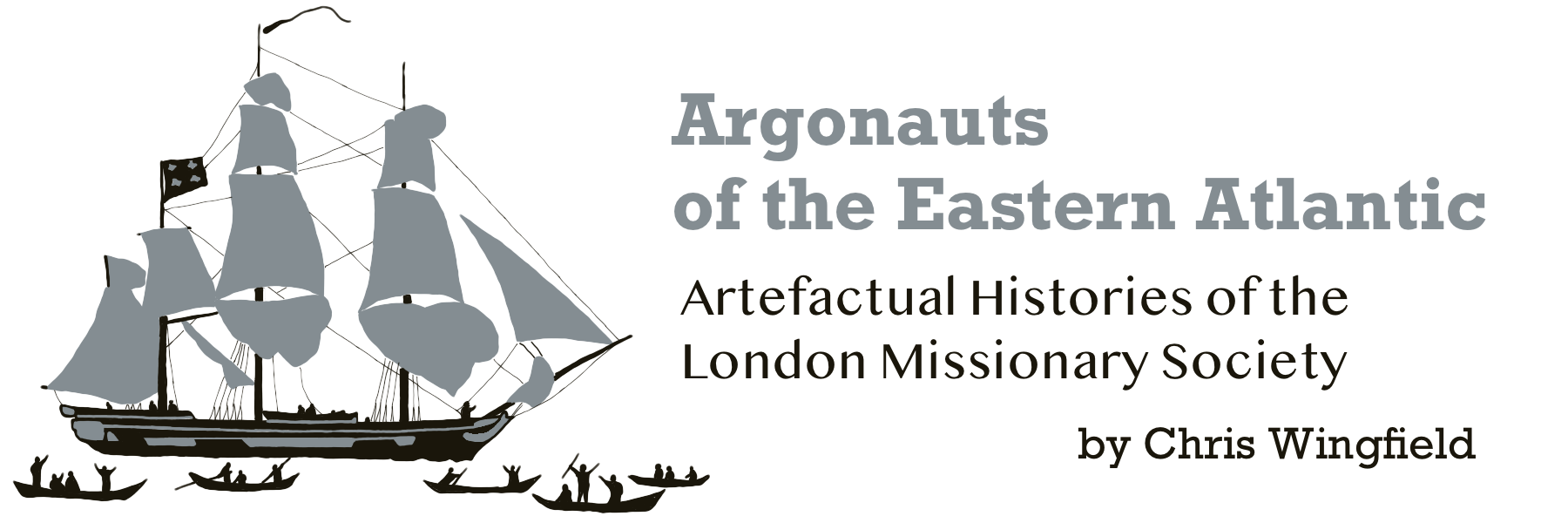
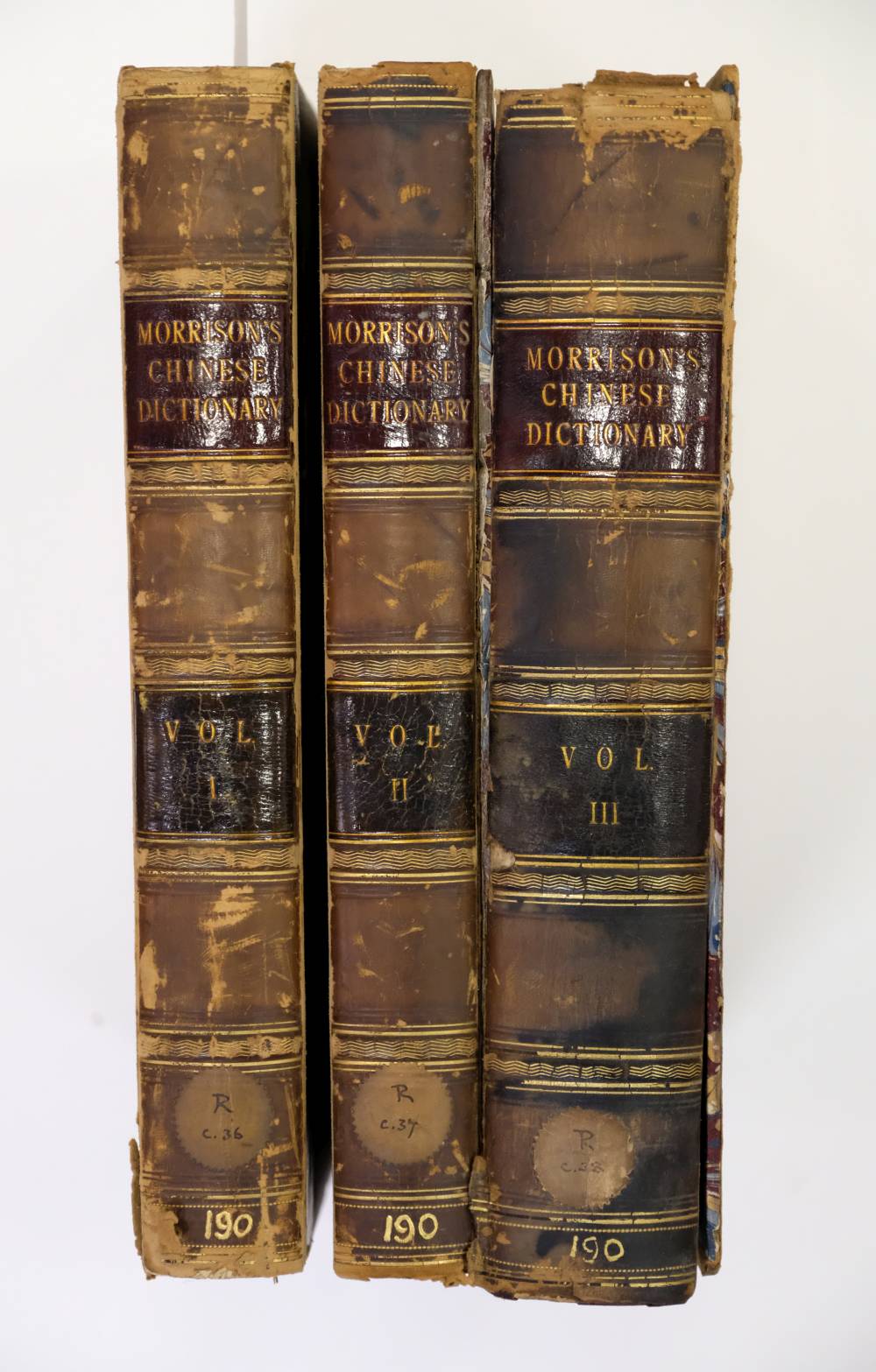
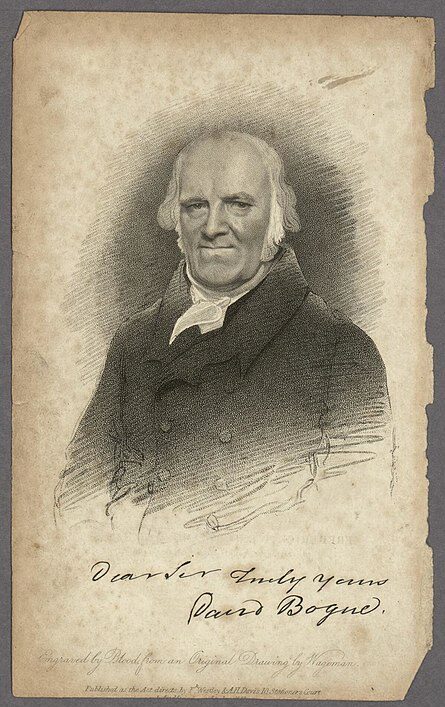
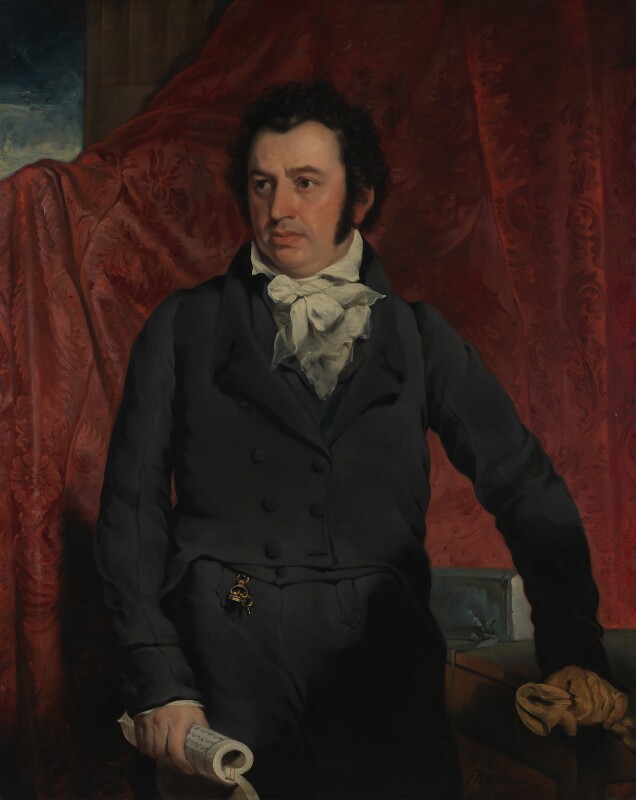
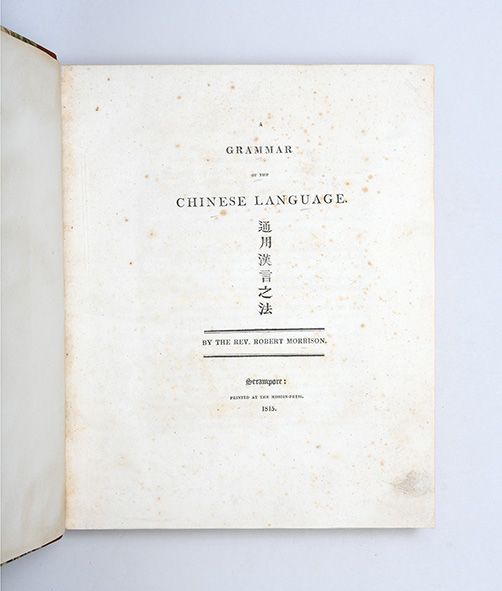

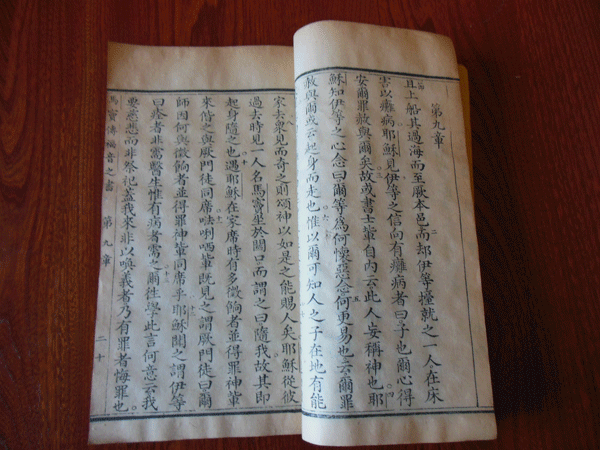
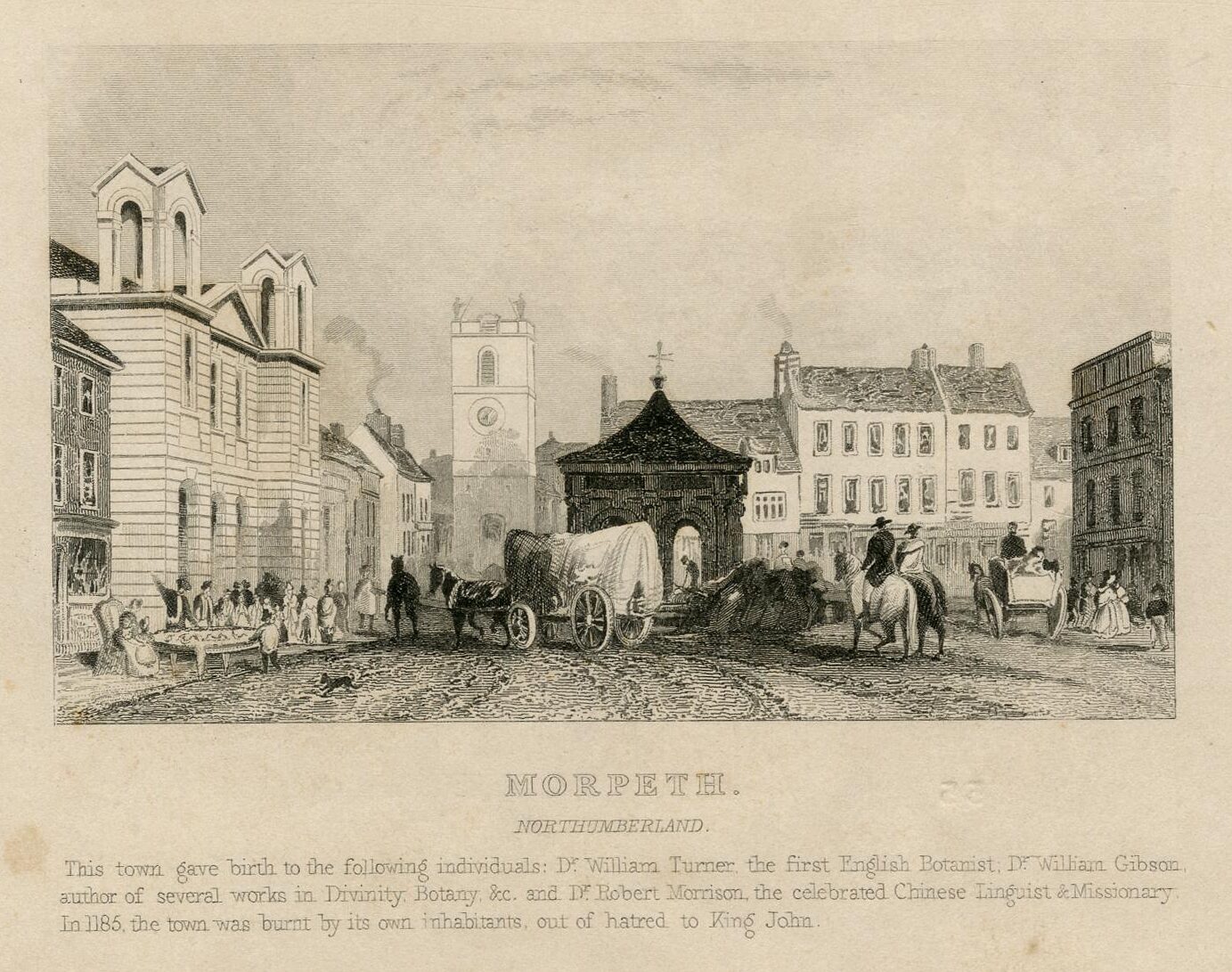

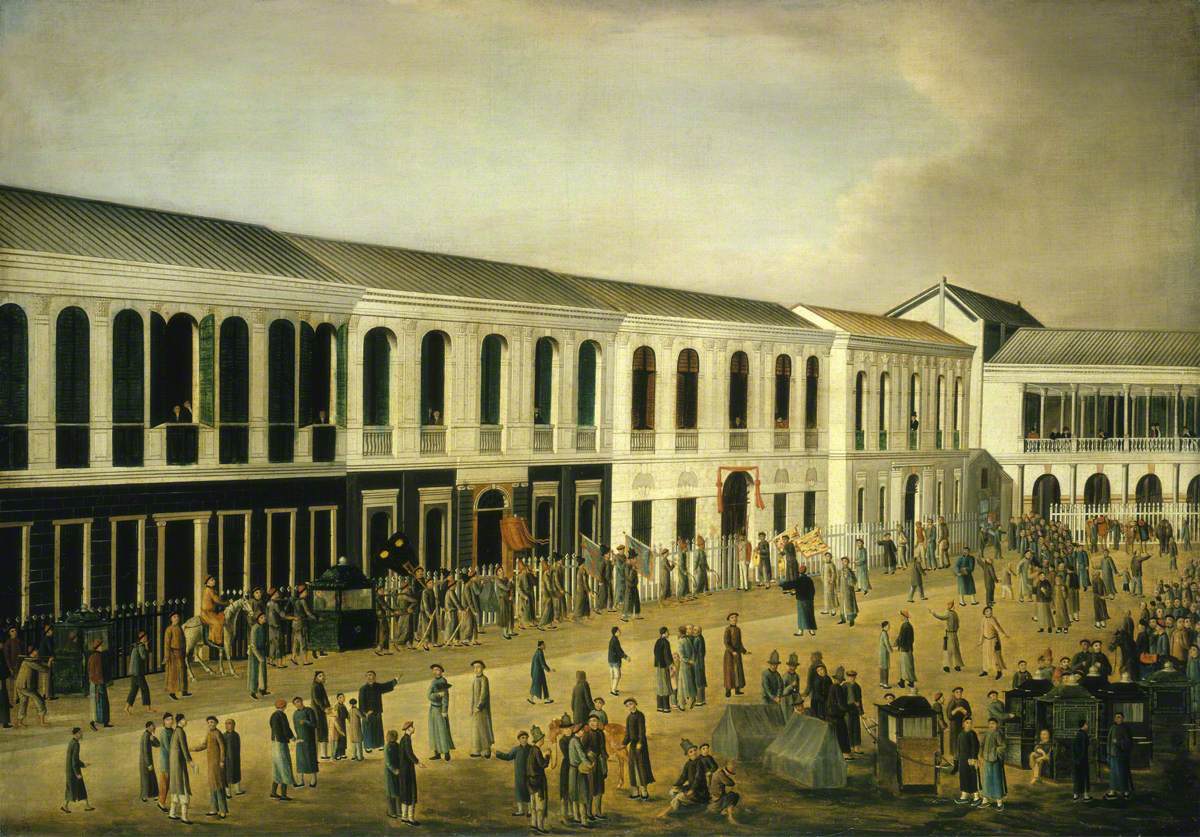
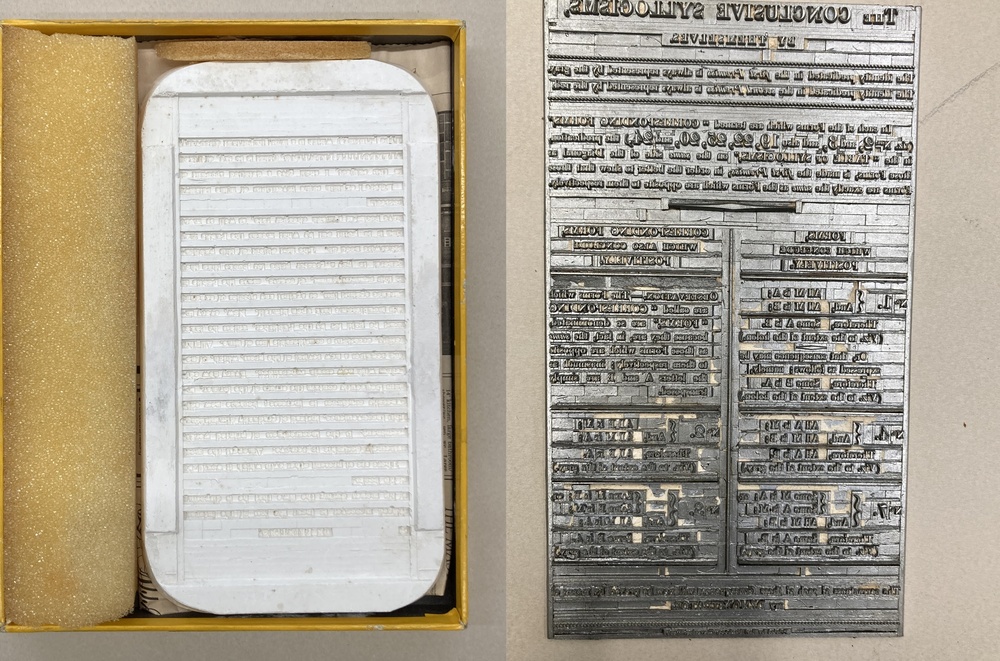
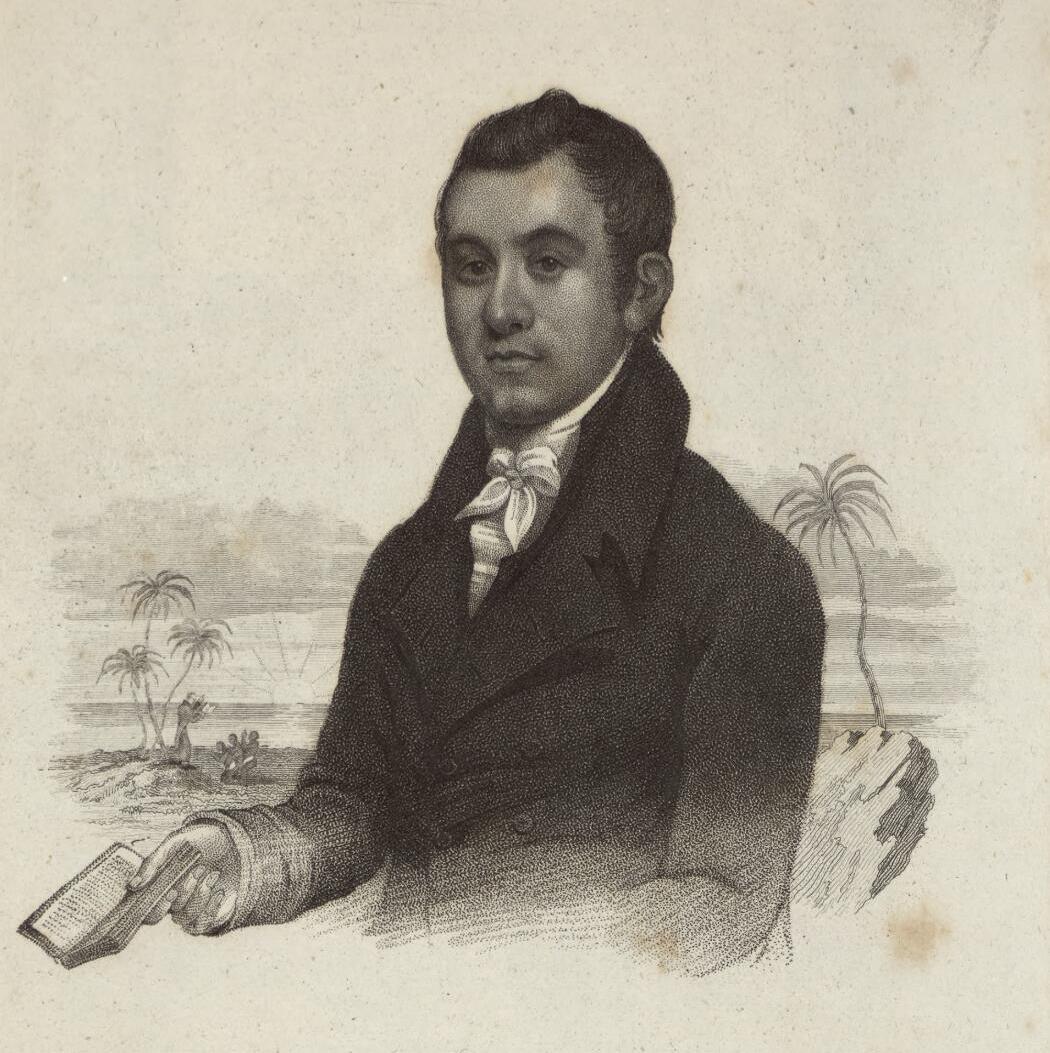

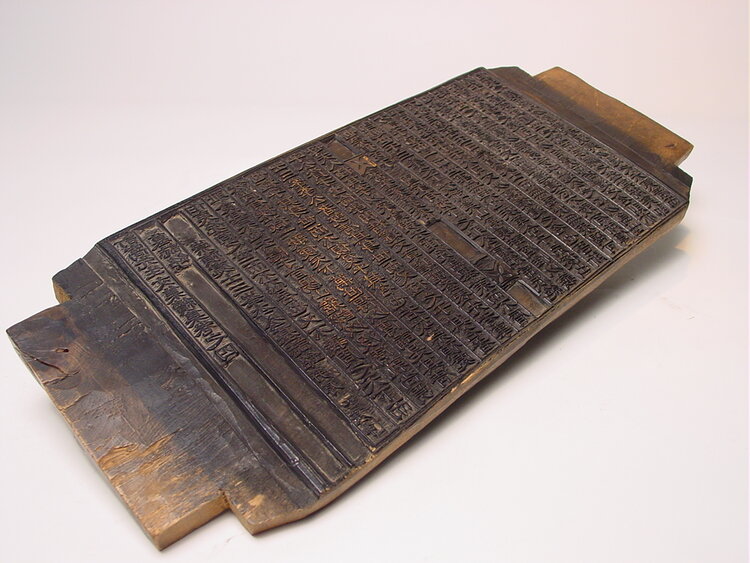
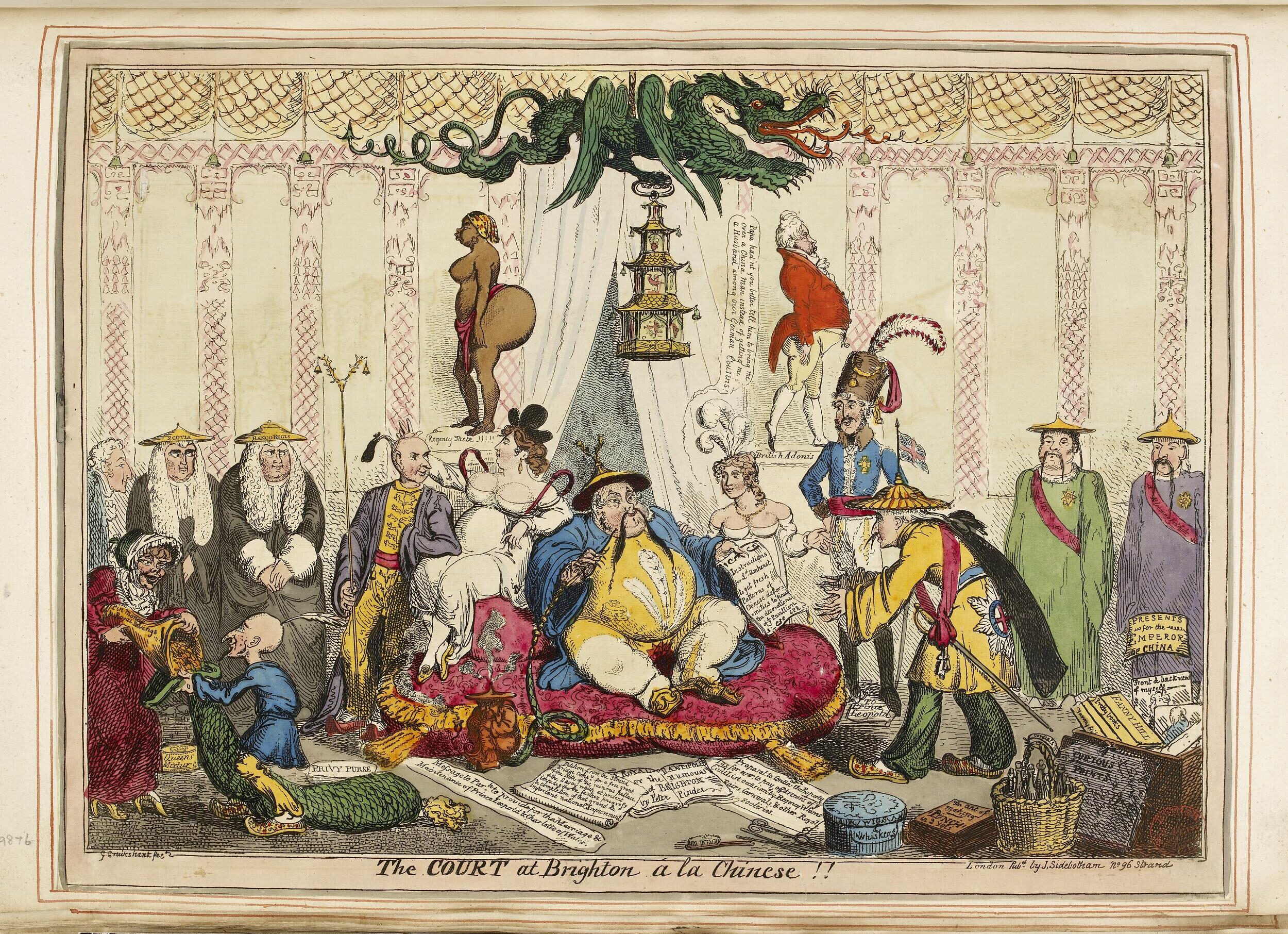
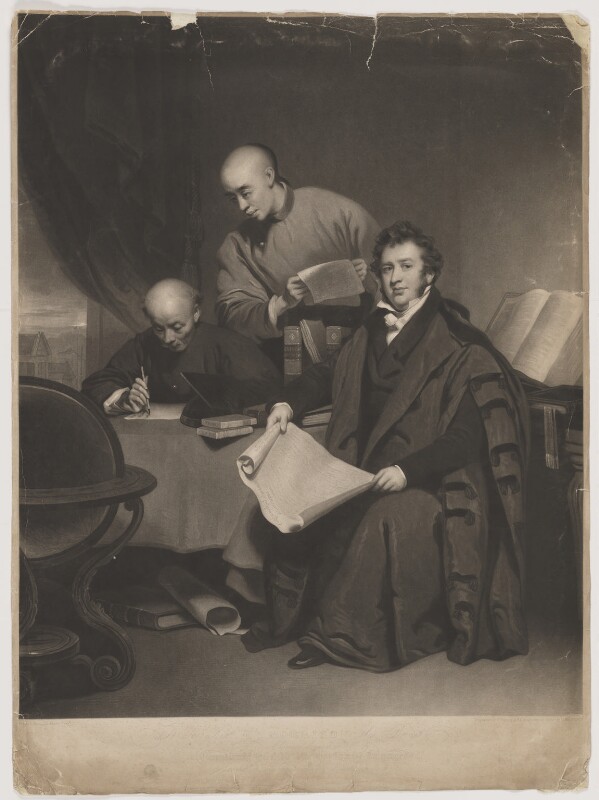
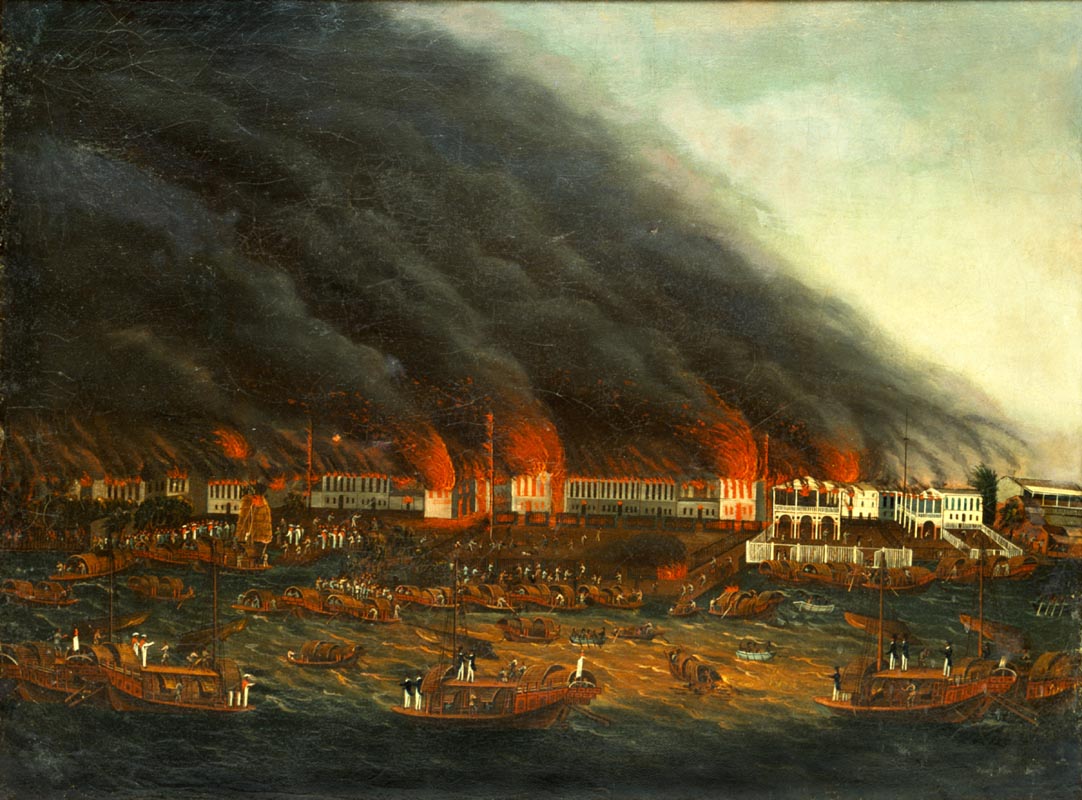

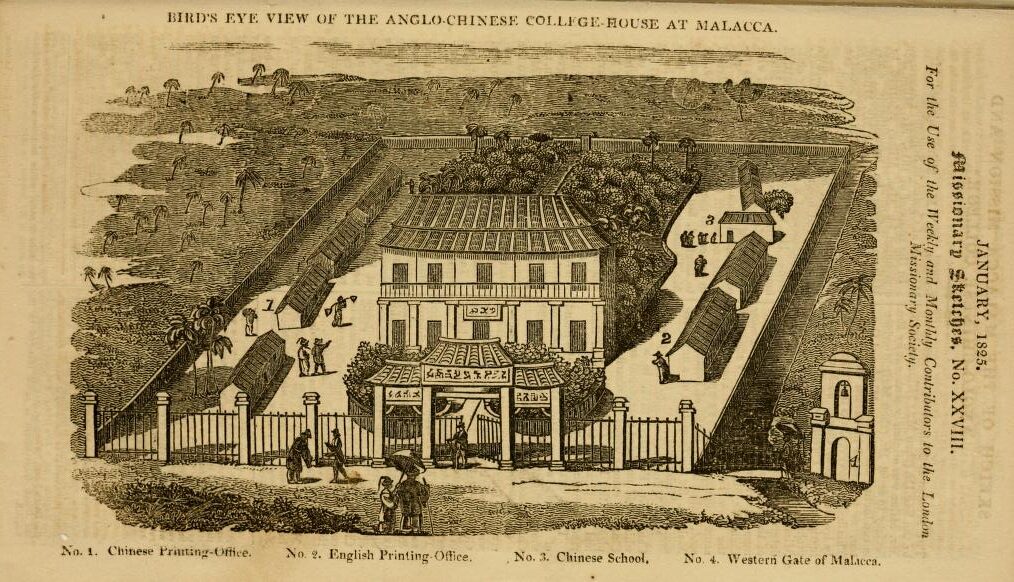
0 Comments